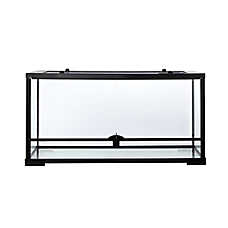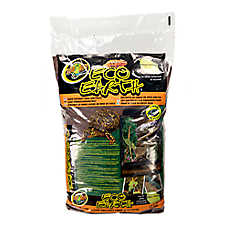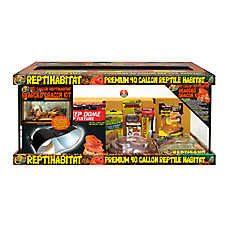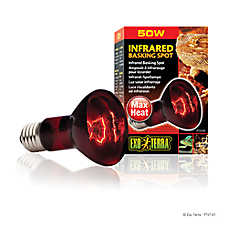Reptile Supplies: A Checklist
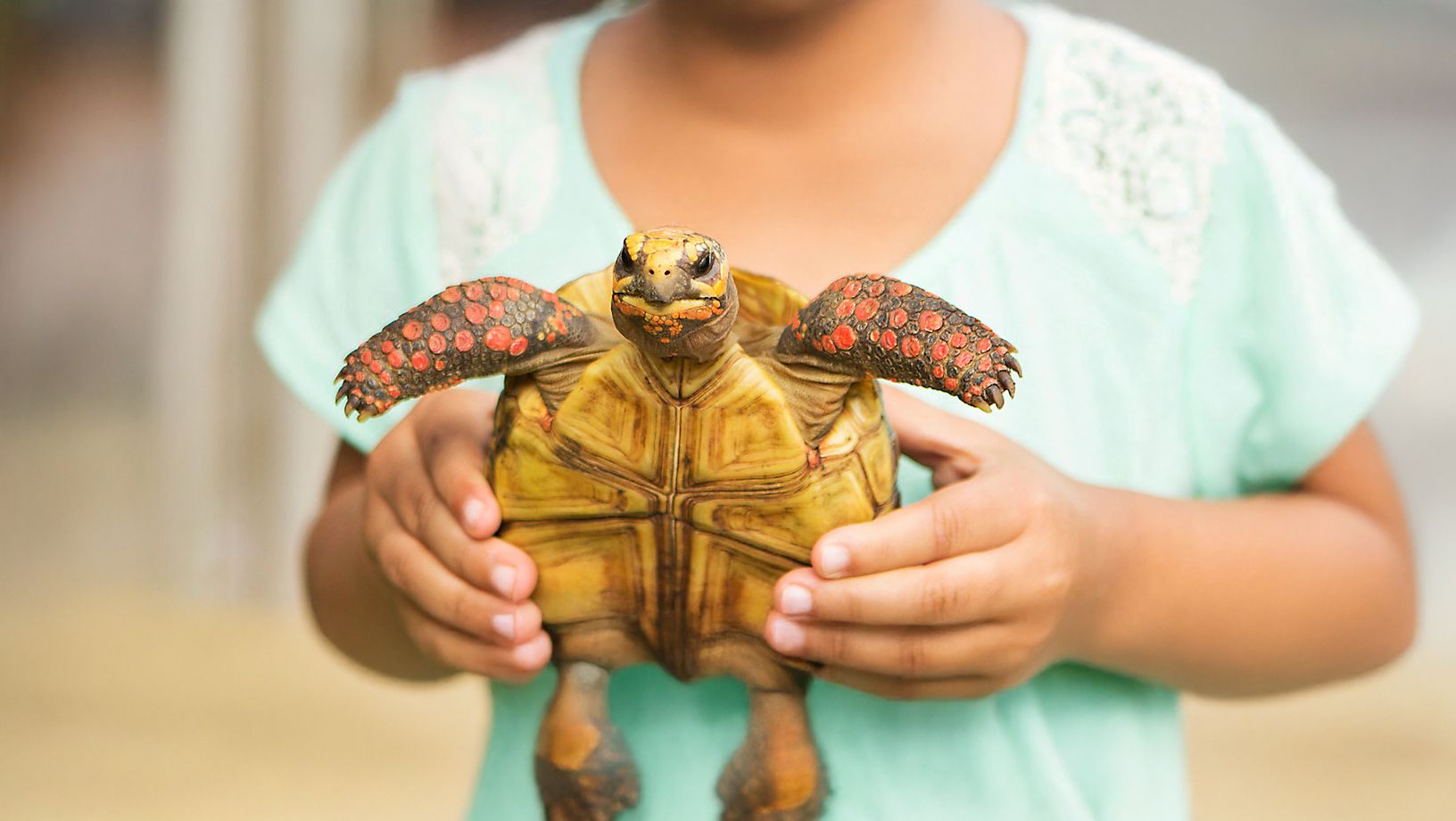
In this Article
It’s always an exciting day when you’re bringing home a new lizard, turtle, gecko, bearded dragon or snake! Many reptiles make excellent pets and they’re incredibly interesting to live with and care for.
You’ll want to make sure you have the right reptile supplies to keep your pet safe, comfortable and healthy. Here’s a brief introduction to caring for reptiles, along with a checklist of some of the things you’ll need.
Every reptile is different
They may all be cold-blooded but can find a warm place in your heart. Every pet reptile will have unique needs when it comes to the size of their habitat, necessary cage decorations, ideal temperature range, humidity requirements and required diet. Be sure to reference PetSmart care guides, research the specific needs of your pet before purchase, and consult your veterinarian about the best way to care for your new reptile friend.
Keep clean to stay healthy
All animals can potentially carry diseases that are contagious to humans. Thoroughly washing your hands with warm, soapy water before and after contact with your pet or its habitat can help prevent viral, fungal, bacterial and parasitic diseases. Immunocompromised individuals should be sure to commit to excellent handwashing to reduce their risk of illness after handling a reptile or its habitat.
It’s all about light and climate control
Reptiles are “cold-blooded” meaning they need an external heating source to help regulate their body temperature. This heating source and appropriate temperature are important to activate other physiological and metabolic functions. Ultraviolet lighting is necessary for many reptile species. Among other benefits, UV-B radiation is required to help synthesize Vitamin D3 and metabolize calcium. Additionally, unlike humans, UV-A is a visible spectrum of light for most reptiles and providing this allows them to see their world how nature intended. Each type of pet reptile will have very particular requirements when it comes to heating, lighting, and humidity. Be sure to understand the range of temperatures that your pet will need inside its habitat and what level of humidity will keep it healthy.
You’re in it for the long haul
Many reptiles are long-lived. Before choosing a reptile for a pet, research its lifespan and care requirements. Depending on the species, and level of care you provide, some can live for several decades.
Get used to unusual diets
Depending on the species, your reptile may need a very specific diet that’s different from another pet reptile’s diet. As with our cats and dogs, they all depend on a specific nutritional profile the provides certain vitamins and minerals to remain healthy. Below are descriptions of some broad diet categories. Keep in mind, some species might have even more specific dietary requirements that do not necessarily fall into any one of the categories. Be sure to do your research.
- Insectivorous exclusively feed on insect protein. There are several available feeder insects available that can be provided depending on the species. Crickets are acceptable and safe for all insectivorous species. However, there are also a variety of other insect species that should be provided routinely for nutritional and behavioral enrichment (e.g., mealworms, waxworms, dubia roaches, etc.).
- Examples: Anoles, Leopard Geckos, and Jackson’s chameleon
- While feeder insects provide some of the necessary vitamins and minerals for your pet reptile, it is very important to balance their diet. To provide a balanced diet, gut load and dust the feeder insects appropriately prior to feeding them to your pet. Reference the reptile care guides for a breakdown on the frequency and supplements required.
- Herbivorous exclusively feeds on vegetation like leaves and flowers. There are a variety of commercially available diets formulated for specific herbivorous reptiles. These diets are best combined with fresh reptile safe leaves, flowers and vegetables alongside supplements to complete the nutritional profile.
- Examples: Testudo spp. tortoises, Iguanas
- Omnivorous consume a combination of food items which include insect/animal protein and vegetation and/or fruit. Be sure to research your new pet reptile prior to purchase to fully understand its preferred diet and reference the reptile care guide information.
- Examples: Veiled Chameleon, Red Eared Sliders, Red Footed Tortoise
- For those species that require insects, make sure to properly gut load and dust the feeder insects appropriately prior to feeding them to your pet.
- Frugivorous primarily consume fruit. Most of the pet reptiles in this category benefit from some form of insect/animal protein and possibly vegetation. Be sure to research your new pet reptile prior to purchase to fully understand its preferred diet and reference the reptile care guide information. There are a variety of commercially available diets formulated for specific frugivorous reptiles.
- Examples: Crested Gecko, Gargoyle Gecko, Day Gecko
- Carnivorous exclusively feeds on animal protein. Snakes are the only pet reptiles that exclusively rely on whole animal food sources to obtain all of their nutritional needs. They do not require supplements.
- Examples: Ball python, Corn Snake
A checklist of reptile supplies
Here’s a list of all of the reptile supplies and reptile accessories you’ll need to have ready for you to bring home your pet reptile for the first time.
- Habitat. There are three basic types of habitats – horizontal, vertical, and semi-aquatic/aquatic. Regardless of the type of enclosure, the pets should have ample amounts of livable space with a secure lid or door. Reptiles that feel at home on the ground will appreciate a horizontal space, while reptiles that feel at home in trees or branches need enclosures that are also vertically oriented. Turtles can range from semi-aquatic to fully aquatic, but both require a dry land area. This allows them to come out of the water to dry out, bask in heat/UV-B, and rest.
- Starter kits are a great option – they include many of the reptile supplies you’ll need to build your pet’s habitat!
- Substrate. Substrate is the type of material at the base of your pet’s habitat. This is the foundation to any good reptile habitat and the materials used depend on your pet reptile’s species and preferences. Common substrates include reptile carpet, newspaper, tile, or a combination of natural soil-based materials (e.g., peat soil, coco coir, bark or mulch, charcoal, coarse sand, and sphagnum moss).
- Your pet reptile’s substrate is important for maintaining humidity levels in their habitat. Carpets and tile can be used with lower humidity species while soil blends are recommended for habitats or bioactive enclosures that require higher humidity levels. Soil blends can still work well for lower humidity species, as long as the substrate dries out prior to placing it in the habitat.
- Avoid coconut fiber that hasn’t been finely milled, wood shavings, and calcium sand (or similar products) as these are not safe you’re your pet when used exclusively. These can cause health problems such as eye irritation, respiratory inflammation and bowel obstructions.
- Habitat accessories. The interior of your habitat should include places to hide, things to climb, natural or artificial plants, rocks, branches, and logs to explore. Most reptiles will appreciate having an elevated surface or structure close to the heat lamp where they can bask in the light.
- Lighting and climate control. Your reptile supplies should include two kinds of lighting: bulbs that produce ultraviolet light and bulbs that provide heat. UV-A/UV-B bulbs with timers can re-create a natural cycle of day and night. Depending on your pet reptile and their needs, you may also need a heat lamp. This heating source allows you to create a temperature gradient in the habitat to allow your pet to choose to be warmer or cooler depending on their needs. Two thermometers – one towards the top of the habitat near the heat lamp (if applicable) and one at the bottom on the opposite side from the heat lamp – will help you understand your habitat’s temperature gradient and can help make sure you’re providing both warm and cool spaces for your pet both day and night. You’ll also need a hygrometer to measure humidity. An automatic fogger or mister system can be used to maintain the humidity at the appropriate levels if needed.
- Food. When it comes to food, reptile supplies run the gamut. It is important to research your pets’ specific nutritional needs based on species and age. Like all pets, your reptile may have distinct preferences for their diet.
- Food and water dishes. Depending on the species and pet, a food bowl might be the best method to contain and offer their food. Reptile water dishes are designed to provide a source of hydration for all reptiles, help maintain the habitat’s humidity and if they are large enough can serve as a pool for them to soak in. Make sure the size and depth is appropriate for your pets’ needs and that they have a save way to easily get in and out. Some species will not or cannot drink from bowls. Be sure to research your new pet reptile prior to purchase to fully understand its preferred drinking habits and reference the reptile care guide information
- Cleaning supplies. While there are many over the counter reptile friendly cleaning products, it is best to discuss with your veterinarian prior to using any product. If in doubt, a mild dish soap (e.g., Dawn) and water solution will suffice.
FAQs
What’s the right size habitat for a pet reptile?
The right habitat size will depend on the age, size and species of your pet. Be sure to research the specific needs of your pet thoroughly before choosing a habitat and other reptile supplies. Choose the largest habitat you can accommodate to give your pet plenty of room to explore.
Is sand a good substrate for a reptile terrarium?
While sand may mimic the natural environment of certain desert-dwelling reptiles, most experts do not recommend using it as a standalone substrate. Fine sand can cause intestinal problems when it’s accidentally ingested. Regardless of the manufacturers’ claims that it can be safely ingested, sand has a tendency to accumulate within the digestive tract leading to life threatening obstructions. It may also accumulate within the pet’s nostrils and eyes.
Is it better to have a glass, wood or plastic reptile habitat?
Each type of reptile habitat has its pros and cons. Glass terrariums offer greater visibility but are heavier and may lose more heat. Plastic habitats are lighter and contain heat more easily, but they may not provide the same level of visibility for pet parents. Wood allows a crafty person the ability to easily make their own enclosure, however, they are not able to be fully disinfected and break down with time.
Learn more about preparing for your new pet with PetSmart’s reptile care articles.
Need other accessories while you’re shopping for reptile supplies? PetSmart carries a wide range of reptile products including reptile food, habitat décor, reptile starter kits, bearded dragon tanks, and a wide selection live reptiles that make great pets.
PetSmart also offers convenient shopping with Curbside Pickup or in-store pickup. Need something today? We have select items available for Same-Day Delivery in most areas powered by DoorDash®. For items you purchase frequently, PetSmart has Autoship that automatically delivers the items you want to your door as often as you’d like. Check the website to see which items are eligible.
Information in this article is not intended to diagnose, treat or cure your pet and is not a substitute for veterinary care provided by a licensed veterinarian. For any medical or health-related advice concerning the care and treatment of your pet, contact your veterinarian.
